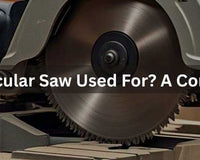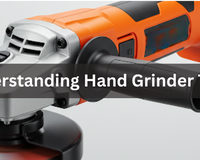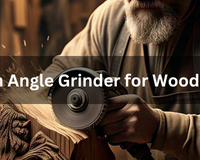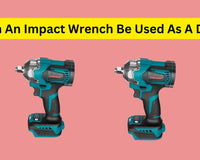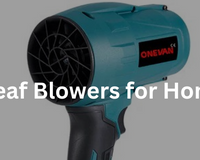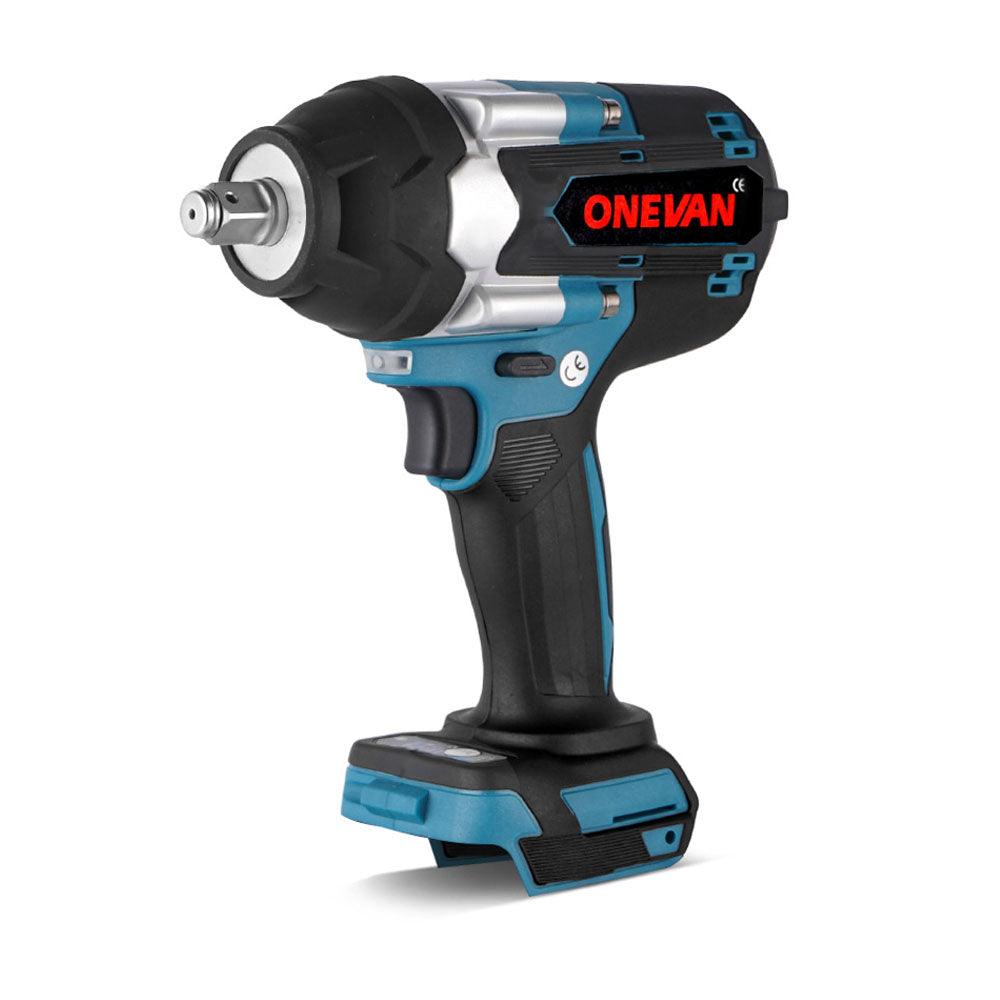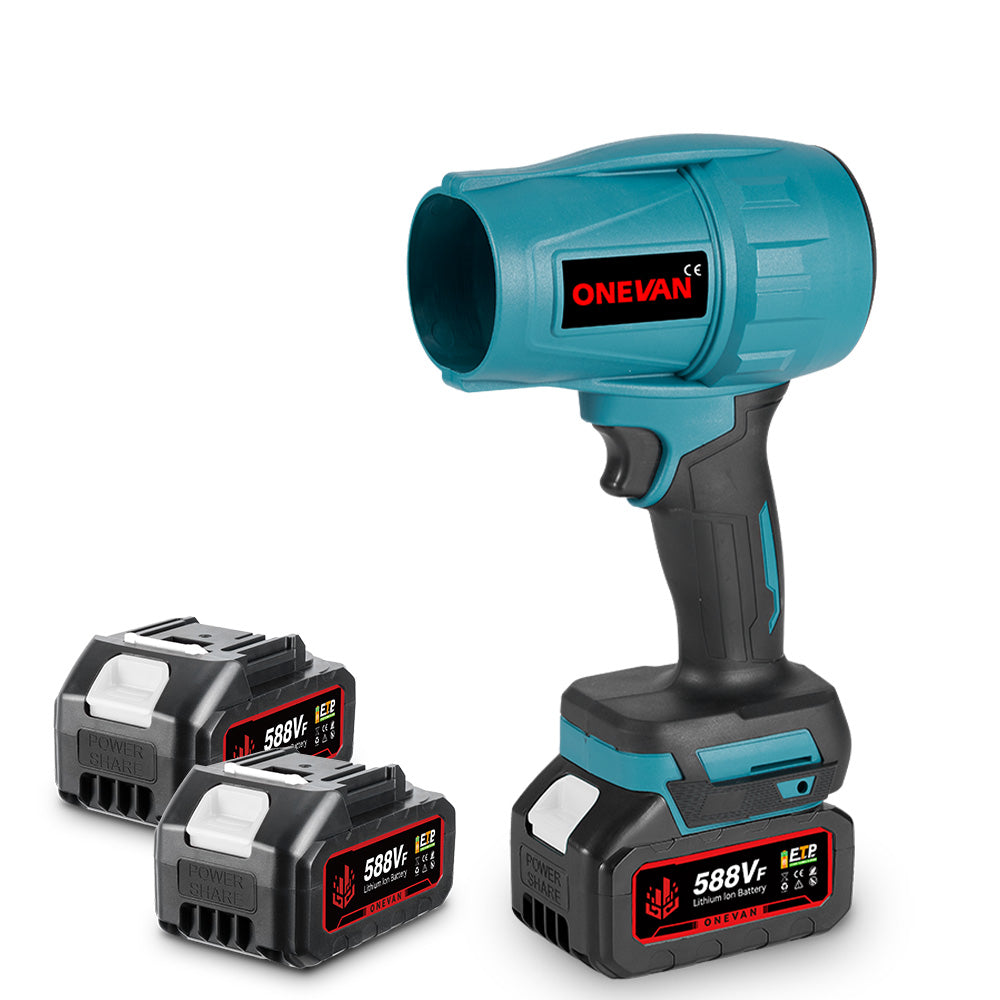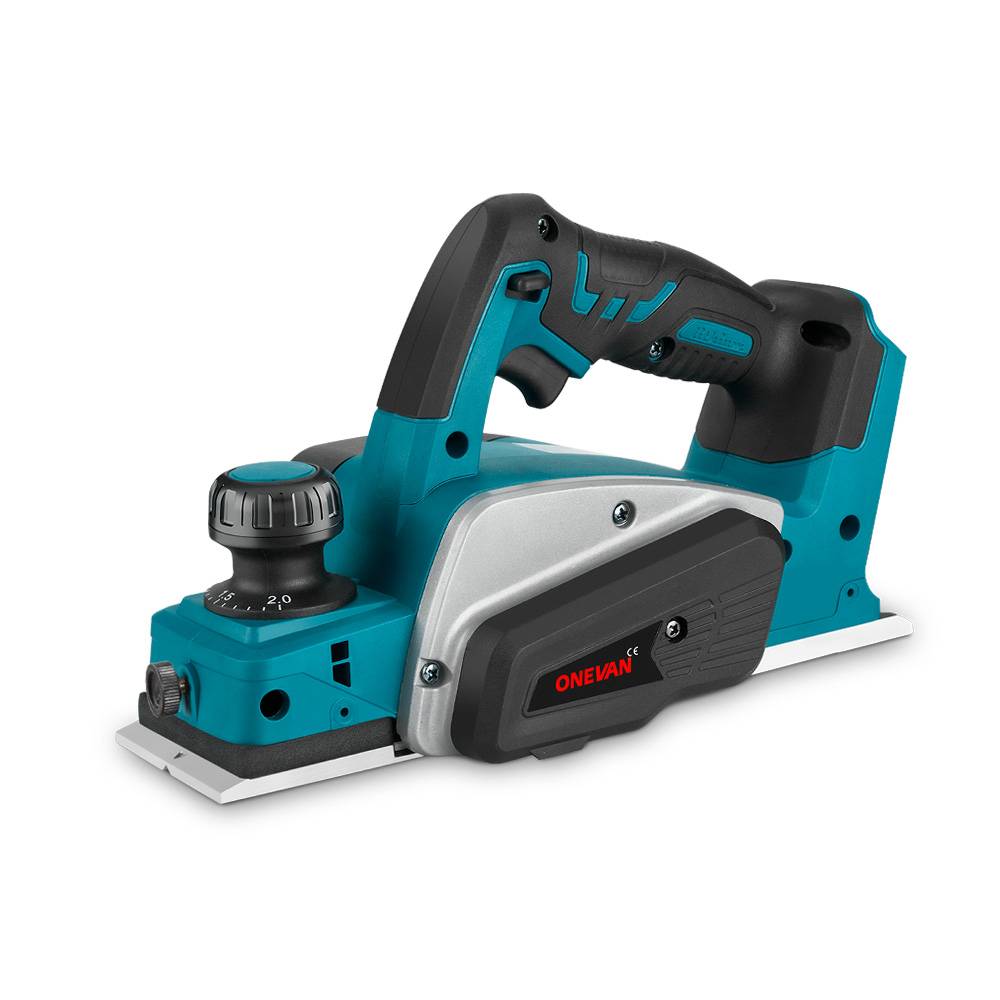Have you ever faced a lug nut on your car and despite putting extreme pressure, you were unable to lose it? Or maybe you were doing a home improvement project and failed to lose a rusty nut welded in a place? On a serious note, using a regular wrench to open such nuts is like you are in a wrestling match.
So what is the solution to open a rusty or stubborn lug nut? An impact wrench is the best solution to open a rusty lug nut. With powerful torque output, it delivers quick bursts to open even the most stubborn fasteners.
Interestingly, there are ongoing advancements in several areas to increase the torque output For example, engineers are working on developing brushless DC motors with improved permanent magnets and optimized coil designs. This leads to improved efficiency, delivering more torque to the fastener.
Similarly, research published in the Journal of Advanced Manufacturing Technology (2023) discusses the development of impact wrenches with integrated torque control systems.
So basically we have written this guide for beginners who want to use an impact wrench. It is going to be quite interesting. If you love repairing, or home improvement tasks, you need to learn the basics of an impact wrench. This guide will help you how to operate this powerful tool.
1. Getting to Know Your Impact Wrench
There are different types of impact wrenches you can select theme following project requirements. Here are the most common types in the 2024 impact wrench comparison:
Pneumatic impact wrenches:These impact wrenches are operated with compressed air. Commonly, different workshops including car repair garages use them. They provide high torque but also generate noise.
Electric impact wrenches:These impact wrenches use an electric motor. Similarly, they are typically quieter and lighter than pneumatic impact wrenches. They come in a variety of sizes and powers, including cordless impact wrenches.
Hydraulic impact wrenches:These wrenches incorporate hydraulic pressure to run their operations. Subsequently, their bulky design makes them a less prominent option compared to pneumatic or electric impact wrenches. These wrenches are very common in industrial sectors.
Cordless Impact Wrenches:These impact wrenches are battery-operated power tools. Not only they are not only light but also easy to operate. Their performance depends on several factors such as:
- Torque (ft-lbs)
- Impact Rate (BPM)
- Speed (RPM)
- Runtime (on a single charge)
- Weight and User-friendly design
1.2 Types of Impact Wrenches: Choosing the Right One for Your Project
1.2.1 Corded vs. Cordless Impact Wrenches
| Feature | Corded Impact Wrench | Cordless Impact Wrench |
| Power | Requires an outlet | Battery-operated |
| Portability and Flexibility | Less portable due to power cord | Highly portable, can be used anywhere |
| Torque (ft-lbs) | 300 - 1200+ | 100 - 800+ |
| Runtime (on a single charge) | N/A (continuous operation) | 30-60 minutes (varies with battery size) |
| Maintenance and Lifespan | Brush replacement | Requires battery maintenance |
| Suitable Applications | Heavy-duty tasks requiring high torque (e.g., lug nuts, construction) | Lighter-duty tasks, (e.g., car repairs, furniture assembly) |
| Cost | The generally lower upfront cost | Generally higher upfront cost due to battery |
Corded and Cordless Impact Wrenches: Pros and Cons
Corded and cordless impact wrenches come with several advantages and disadvantages. Both have some strengths and weaknesses. We shall discuss each below.
Corded Impact WrenchPros:
- Unmatched Power: Corded wrenches deliver the highest torque output, ranging from 300 ft-lbs to over 1200 ft-lbs.
- Continuous Operation: Plugged directly into an outlet.
- Lower Upfront Cost: Generally, more affordable than corded wrenches.
Cons:
- Limited Portability:
- Less Flexible:
- Bulky Design:
Pros:
- Unmatched Portability: You can take these wrenches anywhere.
- Increased Convenience: Quick operations in cluttered and tight spaces.
- Compact Design: Cordless wrenches are generally lighter and more compact than corded wrenches.
Cons:
- Lower Torque Output
- Limited Runtime
- Higher Upfront Cost
1.2.2 Pneumatic vs. Electric Impact Wrenches
| Feature | Pneumatic Impact Wrench | Electric Impact Wrench (Corded/Cordless) |
| Basic Difference | Powered by compressed air | Powered by electricity (corded) or battery (cordless) |
| Power Source | Need an air compressor | Corded/cordless |
| Torque Control | Can be difficult to control air pressure | Provides more precise torque control |
| Durability and Reliability | Generally durable | Durable, electric motors need brush replacement |
| Weight and Comfort | Lighter due to smaller motor | Can be heavier due to the motor and battery |
| Noise Levels | Very loud due to air expulsion | Quieter operations |
| Suitable Applications | Ideal for heavy-duty | Good for car maintenance, and DIY projects |
Pneumatic Impact Wrenches
Pros:
- Unmatched Power: Deliver the highest torque output.
- Continuous Operation: Can work for extended periods without interruption.
- Durable Design: Simpler design with fewer moving parts.
- Lower Upfront Cost: Generally, pneumatic wrenches are less expensive.
Cons:
- Air Compressor Dependency:
- Less Precise Torque Control.
- Loud Operation
- Bulkier Design
Pros:
- Versatility: Available in both corded and cordless options.
- Precise Torque Control: More precise torque adjustment
- Quieter Operation: Significantly quieter than their pneumatic wrenches
- More Compact Design: Electric wrenches are lighter and more compact.
Cons:
- Torque Output
- Corded vs. Cordless
- Higher Upfront Cost
2. What are Key Features of Impact Wrench?

Now you have understood the different types of impact wrenches including their pro and cons. Now we shall move further and study the key features of these wrenches.
2.1 Torque:
Torque is an extremely critical factor that explains the power of the impact wrench. The higher the torque, the more capable the wrench will be in performing heavy-duty tasks. For example, if you are planning to change tires in a vehicle, then you need to buy an impact wrench with a high torque.
2.2 Impact rate:
How many times per minute does an impact wrench hit? A higher number means that it works faster – so it saves much time as well. If you need an impact wrench for a quick job, better choose a power tool with a high impact rate.
The idle Speed:
The idle speed of an impact wrench elaborates its velocity. You can fasten the nut at a higher speed if the idle speed is set higher than its current value. According to comparisons between pneumatic and electric ones, we can say that most pneumatic models have higher idle speeds usually up to 7500 rpm or even more; while electric counterparts may have just 4000 or lower rpms.
2.3 Weight:
It’s also important to consider the weight of an impact wrench. Lightweight power tools are easy to handle and carry. The size of the battery and material determine the weight of your impact wrench.
2.4 Drive Size:
In addition to everything else, size matters when it comes to choosing your ideal impact tool’s performance and compatibility. It makes sense that small models are more suitable for narrow spaces while big machines deliver greater power.
Not all wrenches come with speed control features. But ONEVAN 3/4" 3100N·m Brushless Impact Electric Wrench features a powerful 3100 Nm of torque which is best for most stubborn bolts. Subsequently, its speed change switch allows you to adjust for different tasks. In addition, its brushless motor ensures smooth operation and extended tool life. Plus, it's compatible with Makita 18V batteries for extended operations.
3. Preparing to Use an Impact Wrench
Please check for any faults before using an impact wrench. For instance, you can pre-check the following points before operating an impact wrench.
- Check for damage or cracks on the wrench
- Loose mounting bolts on the wrench body
- Loose threads on the air plug
- Wear or damage on the air plug or air socket
- Also, check that there is no wear on the square end of the anvil or the socket.
If you are using an air impact wrench, prepare a compressor. It will take some time for the air to accumulate in the tank, so in the meantime, replace the socket with a size that matches the nut. Prepare a socket specifically for impact wrenches.
3.1 Essential Safety Gear for Impact Wrench Use

| Safety Tool | Importance | Details |
| Safety Glasses | Essential | Protects eyes from flying debris like metal shavings. Look for glasses that meet ANSI Z87.1 standards. |
| Hearing Protection | Highly Recommended | Impact wrenches are loud and can damage hearing. Use earmuffs with a Noise Reduction Rating (NRR) of 25 or higher. |
| Work Gloves | Recommended | Protects hands from scrapes, and pinches. |
| Steel-toed Safety Shoes | Recommended for certain situations | Protects from falling objects or accidentally dropping the wrench on your foot. |
| Dust Mask | Recommended for certain situations | Protects lungs from dust particles. |
3.2 Selecting the Right Impact Wrench and Attachments
Imagine you're at a hardware store, ready to start a project. But if there are several impact wrenches with attached tools available which one is the best tool to fit your needs? Without the knowledge of proper attachments, you cannot expect good results. Not only will it waste time but also consumes a lot of effort.
There are several types of attachments. The adapter can change the size of the square drive. Change from 19 square to 25.4 square. This allows you to attach a 25.4 square socket. The extension bar is an attachment to extend the length of the socket in cases where the bolt cannot reach the socket. The universal joint allows the axis to be moved freely. It is an attachment that allows you to transmit torque even in angled or narrow places. [
Torque Requirements
Torque requirement means how much force the wrench can deliver to loosen or tighten a bolt. Here are the further divisions:
- Higher Torque (e.g., 300 ft-lbs and above): Ideal for heavy-duty jobs like breaking free rusted bolts.
- Lower Torque (e.g., under 200 ft-lbs): Suitable for lighter-duty applications.
The golden rule is to match the torque of your wrench following your project requirements. Using a wrench with poor torque can be frustrating and also damage the tool.
Socket Sizes
Sockets are interchangeable heads that attach to the impact wrench. Common socket sizes include:
- ½-inch (common for general use)
- ⅜-inch (smaller bolts and tight spaces)
- ¾-inch (heavy-duty applications)
3.3 Importance of Quality Sockets and Extensions
Not all sockets are equal. Therefore, investing in quality equipment is essential.
Durability:
Cheap sockets can break under high torque. It will lead to possible injury or damaging the fastener. Consider sockets made of high-strength materials like chrome vanadium or chromoly steel. It will give you two advantages such as precision fit and safety.
Extensions:
Extensions are handy attachments that expand your wrench in tight spaces. However, it is essential to ensure their material quality to handle the torque without bending or breaking.
4. How to Use an Impact Wrench?
Unlike a socket wrench, an impact wrench is a power tool. A beginner may find it, but once you get used to it, it becomes easier to use. Impact wrench tightens bolts with strong torque by applying a blow in the direction of rotation. It is characterized by a square drive socket that is installed. It is mainly used in architectural structures.
4.1 Step-by-Step Guide to Using Your Impact Wrench Effectively

These safety tips have been discussed earlier too. Since we are explaining the basics of operating the impact wrenches, let’s revise the first step.
Pre-Use Safety Check (Step 1):
- Put on Eye Protection Glasses
- Wear Hearing Protection Equipment
- Wear Work Gloves
- Do Impact Wrench Inspection (Check for any loose parts, cracks, or damage)
Power Up (Step 2):
- Cordless Wrench: Slide the battery pack into the designated slot on the wrench's body.
- Corded Wrench: Plug the power cord into an outlet.
- Air-powered Wrench: Connect the air hose to the air inlet on the wrench.
Attaching the Socket (Step 3):
- Choose the bolt or nut-matching socket size
- Slide the socket onto the square drive shaft
- Pin and O-ring (Optional)
Testing and Direction Selection (Step 4):
- Perform a Quick Test Run
- Ensure the switch is set in the correct direction.
Keep your face and hands away from rotating parts while in use. If abnormal vibrations occur, immediately stop using the machine. Do not perform any work other than the machine's specified capacity. Elephant-shaped bolts may break, and thick bolts may not be tightened properly. Please use a socket designed for impact wrenches.
4.2 Expert Tips for Maximizing Efficiency with an Impact Wrench
Turning on the impact wrench is not everything. Similarly, using these power tools for basic tasks is also easy. What are the advanced tips for using an impact wrench?
- Choose the Perfect Wrench including the correct socket size
- Understand the torque value needed for the task
- Take advantage of speed control :
- Get high-quality attachments according to the size of the wrench
- Maintain Adequate cleaning and Lubrication Procedures
5. Using an Impact Wrench For Different Materials And Tasks
The impact wrench is a versatile tool, but its effectiveness depends on using it correctly for different materials and tasks. Here's a breakdown to help you conquer various projects with confidence:
1. Knowing Your Material:
Understanding the material is crucial to working with an impact wrench. If you put extra force, soft metals like aluminum can be damaged easily. Subsequently, metals like steel can bear the high torque. Simultaneously, brittle materials like plastic or some ceramics can crack under too much pressure.
2. Torque Adjustment:
Adjust the torque setting according to the material's strength. You can check the user manual to follow the recommended torque values.
3. Socket Selection and Attachments:
Sockets and attachments should be of high quality matching with your workpiece. For example, some impact-resistant sockets are designed to be used on soft materials to reduce damage.
4. Impact Frequency & material Impact:
Impact frequency means the number of blows the wrench delivers per minute. A higher frequency is effective against stubborn fasteners in harder materials. Similarly, it can also damage softer materials.
5. Bolt/Nut positioning:
If you want to tighten or loosen fasteners in unusual positions require extension or appropriate body posture. Practice will help you grip the wrench to avoid issues like slipping.
6. Avoiding Over Tightening:
Over-tightening will lead to damage to the threads significantly. This is particular for softer materials. Therefore, it is highly recommended to consult a torque chart.
8. Disassembly vs. Assembly:
During disassembling, lose all fasteners slowly. Similarly, for assembly, tighten the bolts in a star pattern) for an adequate pressure.
6. Keeping Your Impact Wrench in Top Condition
An impact wrench needs adequate care to keep your tool in perfect condition. We are going to share some practical tips to accelerate your performance.
Cleaning After Use:After each use, clean up your wrench with a clean, dry cloth. Subsequently, for debris, use a can of compressed air to blow out any dust.
Lubrication:The lubrication procedure can vary according to the impact wrench model. That is why, read the user manual for proper instructions and recommended lubricant.
Battery Care (Cordless Models):Keep your battery charged to avoid running out of power. It is recommended to get extra batteries from your manufacturer. If you need a high-quality electric impact wrench along with an extra battery consider ONEVAN.
Checking and Replacing Worn Parts:Periodically check your impact wrench for any damaged loose screws, worn sockets, or damaged O-rings.
Tightening Loose Components:Vibration can lose screws and connection on your tool. Therefore, keep checking your power tools over time.
Storage:It is recommended to store the wrench adequately in a clean, dry place. It is the best practice you keep the tool away from dust.
7. Tips for Choosing and Buying an Impact Wrench
When choosing an impact wrench, you often choose from three options: power source (rechargeable, corded, air), torque (tightening), and square drive size. Impact wrenches are basically divided into two types: rechargeable (cordless) and corded (AC-powered). There is also an air type!
Rechargeable impact wrenches use batteries, so they can be used anywhere and are easy to handle. Although many of them are heavy, they are becoming mainstream due to their good maneuverability.
7.1 What to Look for When Buying an Impact Wrench?
Torque
Torque is the force applied when tightening or loosening a bolt or nut. It shows how much torque you can tighten. If the torque is too high for the work, it may lead to bolt damage. On the other hand, if the torque is low, a load is placed on the motor, which can lead to damage. It is important to choose one depending on the content to be used.
Socket mounting angle drive size
Impact wrenches use square drives. The size of the insertion angle of the socket is the width across the flats of these four corners. Standards are unified for each manufacturer.
7.2 Reading Reviews and Comparing Brands: Finding the Impact Wrenchfor Your Needs
Selecting a quality tool can be a big hassle for beginners. Since every brand claims to be the best in manufacturing, what are some fundamental points to note when buying an impact wrench?
1. Credible Reviews: Look for reviews from trusted sources like Capterra, Google Business, and Consumer Reports.
2. User Feedback: Reading user feedback can give you valuable insights. Pay attention to both positive and negative reviews so you take a balanced approach.
3. Brand Reputation:
Brand reputation matters a lot. Therefore, always look for brands that offer both quality and quick customer support.
4. Comparison Price:
Impact wrenches' price vary depending on the range of features such as torque output, and brand. Therefore, setting a budget can help you to get the best value for your money
5. Personal Needs:
This is very important. You are not supposed to buy an expensive and industrial-purpose wrench to just change a car tire. You can talk to the manufacturer’s customer support also to get the best suggestions.
6. Professional Opinions:
Also, consult with accessible but seasoned mechanics to get valuable insight into different brands and best-performing wrenches.
| Type | Impact Wrench | Features | Torque | Target User |
| Pneumatic | Ingersoll Rand 2135TiMAX | High-performance | Up to 1,350 ft-lbs | Professional mechanics |
| Pneumatic | Chicago Pneumatic CP7762 | Affordable and lightweight | 425 ft-lbs | DIYers |
| Corded Electric | Kobalt 6904 | High power | Up to 350 ft./lbs | Mechanics & DIYers |
| Corded Electric | DEWALT DW0314 | Balance of power and quality | Around 500 ft-lbs | Professionals, DIYers |
| Cordless Electric | Makita XWT08Z | Compact & lightweight | 460 ft-lbs | DIY, professional |
| Cordless Electric | Bosch GDX18V-8 | high-capacity battery | Up to 800 ft-lbs | Professionals & DIYers |
8. Conclusion
The modern impact wrenches have transformed from a niche to a professional tool. Be it a domestic user, DIY enthusiast, or run a professional maintenance company, you need a powerful impact wrench. To execute your operations successfully, buying a perfect wrench is the key. Hence you can unlock its full potential.
9. FAQs
1. Can I use regular sockets with an impact wrench?Don’t use ordinary regular sockets with an impact wrench. Normal/standard sockets are not built to handle a huge amount of torque or high-impact force. Always use impact-rated sockets particularly designed for high-performance impact wrenches.
2. What is the difference between an impact driver and an impact wrench?Both impact drivers and impact wrenches are designed to make rotational force. However, they are different in terms of several features like size, strength, and area of use. Simultaneously, an impact driver is a small, portable motor that proposes a unique torque control mechanism to push screws and lag bolts in the material. Similarly, impact wrenches are heavy-duty machines aimed at twisting nuts and bolts due to their high torque capacity.
3. When should you use an impact wrench?- Removing lug nuts from car wheels
- Loosening stubborn bolts and fasteners
- Tightening bolts in construction projects
- Working with machinery and equipment
- Don't use it for tasks requiring precise torque control.
- Don't use it for drilling holes.
- Don't use it with damaged sockets.
- Don't exceed the recommended torque capacity.
- Don't use it without proper safety gear.
Yes, it is fine to use an impact wrench on lug nuts. Definitely, it is one of the best tools to use to change car tires. It is recommended to use an appropriate socket size.
6. Is an impact wrench stronger than a drill?Generally, an impact wrench can perform better compared to a drill. This is because impact wrenches are designed to deliver high torque in short bursts. Drills, however, are good for sustainable rotation.
7. Why use impact instead of drill?- Higher Torque
- Powerful Impact Action
- Speed and Efficiency
The power of an impact wrench depends on the project requirements. For DIY projects, a wrench with torque (around 200-300 ft-lbs) is sufficient. For professional use, a more powerful wrench (over 400 ft-lbs) is required.
9. Can I drill a hole with an impact wrench?No, it is not feasible to drill a hole with an impact wrench. Impact wrenches are designed for rotational force, not drilling. Operating these tools against the procedures can damage the wrench and also cause injuries.
10. Can you drive screws with an impact wrench?Technically, it is possible to drive screws with impact wrenches. However, it is not an advised practice. Since impact wrenches are not designed for high precision torque control which is required for driving screws.


